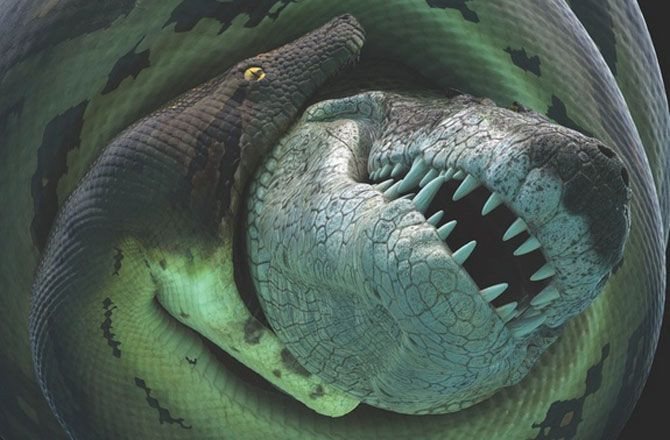Scientists Name 900-Pound Ancient Croc After Fictional Beast From ‘The Lord of the Rings’

A huge ancient species of crocodilian, which preyed on turtles and fought with monster snakes in the rivers of the world’s oldest rainforest millions of years ago, has been offered a scientific name in a new study conducted by researchers from the University of Florida.
The creature, which was believed to have grown to be 16 feet long and weigh 900 pounds, is now called “Anthracosuchus balrogus” after a fierce fictional creature called “the Balrog,” which appeared in J.R.R. Tolkien’s novel “The Lord of the Rings.” Scientists said, in the study, that the pre-historic crocodilian shared its dwelling with Titanoboa, a 58-foot-long extinct genus of snake.
“Much like that giant beast, Anthracosuchus balrogus was from deep within a mine after 60 million years trapped within the rocks of tropical South America,” Jonathan Bloch, an associate curator of vertebrate paleontology at the Florida Museum of Natural History and the study’s co-author, told Live Science.
The researchers said that the findings about the new species are expected to help scientists better understand how present-day crocodiles adapt to changing environments.
“This new finding showcases the wide range of ecological variation that tropical crocodiles already had by 60 million years ago — much larger than modern Neotropical crocodile faunas,” Carlos Jaramillo of the Smithsonian Tropical Research Institute in Panama and the study’s co-author, said in a statement.
The Anthracosuchus balrogus is the third new species of ancient crocodilian found in the Cerrejon coal mine of northern Colombia. The species’ short snout is said to have been similar to the large jaw muscles of dyrosaurids, a family of extinct neosuchian crocodyliforms, which originated in Africa and swam across the Atlantic Ocean to South America nearly 75 million year ago, according to the study.
“This group offers clues as to how animals survive extinctions and other catastrophes,” Alex Hastings, a postdoctoral researcher at Martin Luther Universität Halle-Wittenberg and former graduate student at the Florida Museum of Natural History, said in the statement. “As we face climates that are warmer today, it is important to understand how animals responded in the past. This family of crocodyliforms in Cerrejon adapted and did very well despite incredible obstacles, which could speak to the ability of living crocodiles to adapt and overcome.”
© Copyright IBTimes 2024. All rights reserved.






















